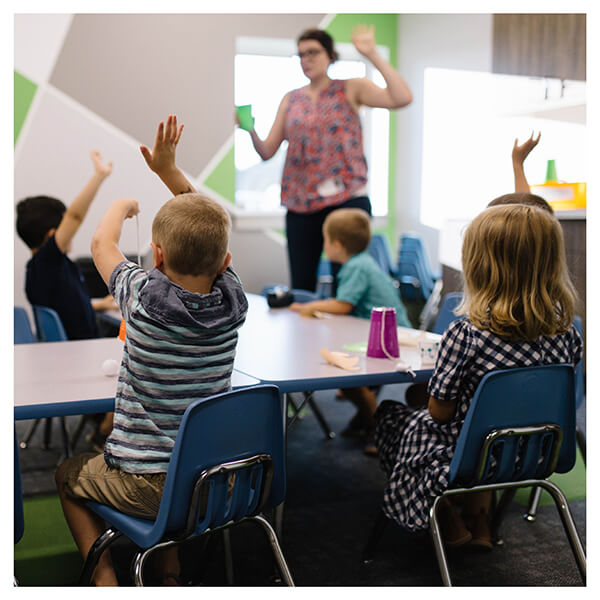
The first step toward inclusion in churches is developing a theology of disability. We need to understand why we do inclusion before we make a plan for how we’ll do it. It’s also important for parents of kids with disabilities to read and meditate on what Scripture says about disabilities. Let’s start with examining the worldviews on disability, look at passages that influence a theology of disability, and look at what the church’s response should be (Hubach’s model of belonging).
Influential resources:
- Same Lake, Different Boat: Coming Alongside People Touched by Disability, by Stephanie O. Hubach
- Disability & The Gospel: How God Uses Our Brokenness to Display His Grace by Michael S. Beates
- Jesus and Disability: A Guide to Creating an Inclusive Church by Chris H. Hulshof
- Disability and the Church: A Vision for Diversity and Inclusion by Lamar Hardwick
Three World Views:
Christians must hold a different view of disabilities than the world believes and teaches—one guided by Scripture and lived out through the Church. In Same Lake, Different Boat, Stephanie O. Hubach describes three world views of disability:
The first two are the modernist perspective and the postmodern perspective:
Proponents of the modernist perspective communicate that disability is an abnormal part of life in an otherwise normal world. Therefore, disability is an aberration that needs to be fixed, eliminated, or perfected. In reaction, broadly understood, advocates of the postmodern view convey that disability is a normal part of life in a normal world. Disability, in this view, is seen as a difference no different than “any other human characteristic,”‘ such as hair or eye color. Therefore, disability is a neutral human characteristic that needs to be embraced.
Functional & Social Aspects of Disability
The functional aspect is the impairment. The social aspect is the treatment. The modernist view focuses on the functional dimension—the impairment. The postmodern view focuses on the social dimension—”socially constructed experience of active or passive oppression.” Only the biblical perspective wholeheartedly embraces both the functional and social realities.
The third view is the biblical perspective. In contrast, the biblical perspective holds in tension the truths inherent in the modernist and postmodern perspectives, while simultaneously rejecting their misleading elements. The biblical worldview embraces disability as a normal part of life—it should not surprise or shock us. But disability is to be expected only because we live in an abnormal world—a world that is wracked by the effects of the fall on all humanity and, to some degree, on creation itself.
Disability, viewed through the lens of Scripture, is simply a more noticeable form of the brokenness and difficulty that is common to the entire human experience. The biblical perspective allows us to navigate between the cultural cliffs of modernism and postmodernism. Most importantly, the biblical view unabashedly embraces human dignity and diversity while honestly acknowledging difficulty where it exists.
Passages that form our theology of disability:
Disability is addressed in Scripture from Genesis to Revelation. I’ve chosen passages that have been the most influential in my view of disability and linked to longer posts I’ve written on them.
- Exodus 4:10-12, “But Moses said to the Lord, ‘Oh, my Lord, I am not eloquent, either in the past or since you have spoken to your servant, but I am slow of speech and of tongue.’ Then the Lord said to him, ‘Who has made man’s mouth? Who makes him mute, or deaf, or seeing, or blind? Is it not I, the Lord? Now therefore go, and I will be with your mouth and teach you what you shall speak.'”
- 2 Samuel 9, “So Mephibosheth ate at David’s[a] table, like one of the king’s sons” (v. 11b)
- Luke 14, “Then the master of the house became angry and said to his servant, ‘Go out quickly to the streets and lanes of the city, and bring in the poor and crippled and blind and lame.’ And the servant said, ‘Sir, what you commanded has been done, and still there is room’” (vv. 21-22)
- John 9, “As he passed by, he saw a man blind from birth. And his disciples asked him, ‘Rabbi, who sinned, this man or his parents, that he was born blind?’ Jesus answered, ‘It was not that this man sinned, or his parents, but that the works of God might be displayed in him.'”
- 1 Cor. 12:12-31, “the parts of the body that seem to be weaker are indispensable” (v. 22).
Other helpful passages:
- Lev. 19:14, “You shall not curse the deaf or put a stumbling block before the blind, but you shall fear your God: I am the Lord.”
- Psalm 139:14, “For you formed my inward parts, you knitted me together in my mother’s womb. I praise you for I am fearfully and wonderfully made.”
- Matthew 21:14, “And the blind and the lame came to him in the temple…”
- 1 Cor. 14:10&11, 33, “There are doubtless many different languages in the world, and none is without meaning, but if I do not know the meaning of the language, I will be a foreigner to the speaker and the speaker a foreigner to me … For God is not a God of confusion but of peace.”
Model of Belonging:
From Same Lake, Different Boat: Coming Alongside People Touched by Disability, by Stephanie O. Hubach
Each party is required to enter the life of the other in a way that brings blessing to everyone.

A’s request for accommodations can be made in a way that communicates desired or need (both of which embrace vulnerability) or in a way that is rights-oriented or demanding (both of which avoid vulnerability).
In a parallel fashion, B can respond in a way that welcomes, listens, and adapts (embracing vulnerability) or in way that ignores, rejects, and self-protects (avoiding vulnerability).
While both parties are responsible for their actions, the onus is on the church—as the body of Christ—to initiate and pursue welcoming and belonging even if the needs of person A are great & their approach is less than desirable.

Our faithfulness to move toward those with profound disabilities—by increasing our own vulnerability—respects and validates the authority of the vulnerable, and in turn eventually increases their capacity for meaningful action. This adds to their flourishing as well as to our own.

Posts on related topics:
-
What if my child isn’t able to learn about God and experience salvation?
- Is Disability Normal? by Stephanie Hubach for The Gospel Coalition


